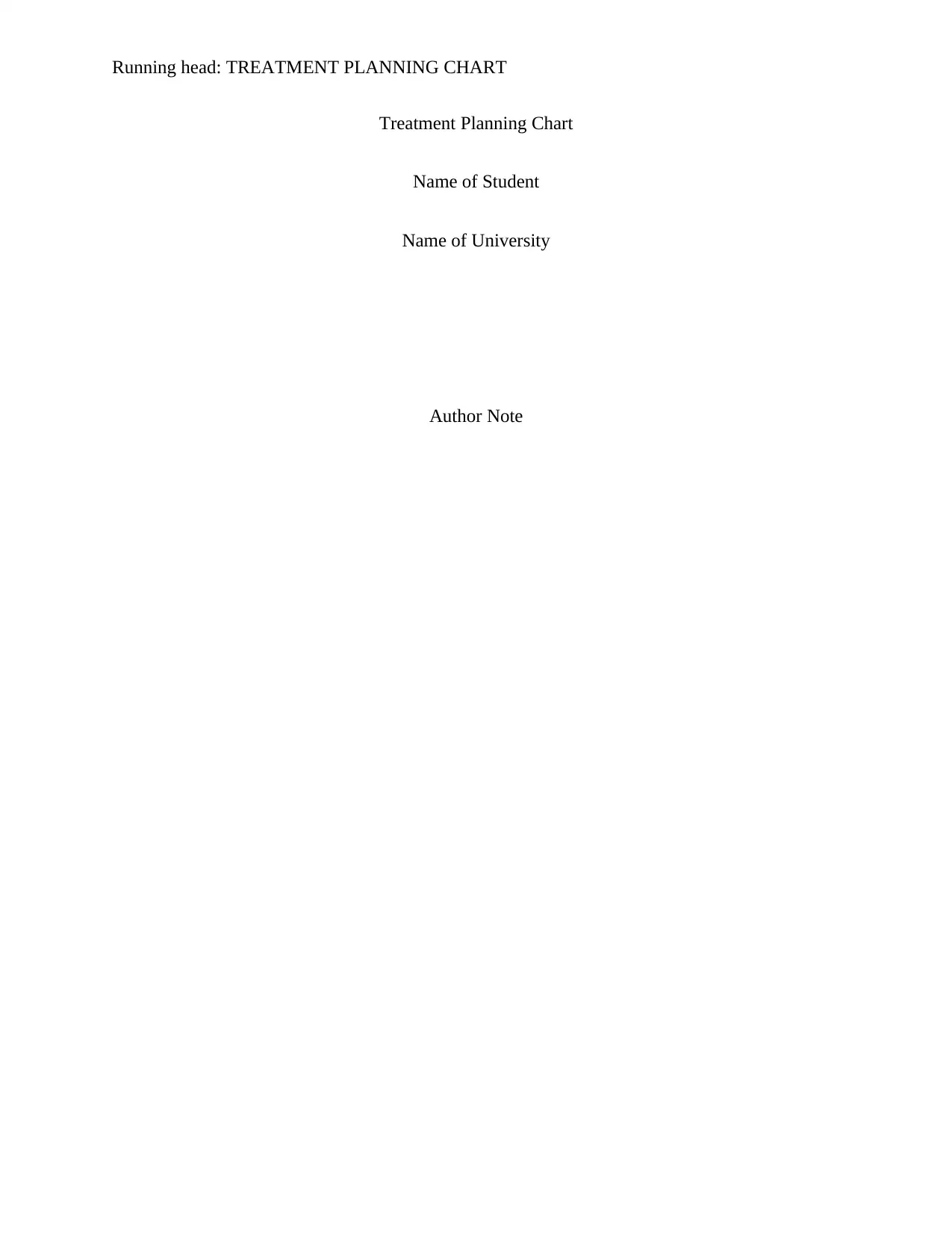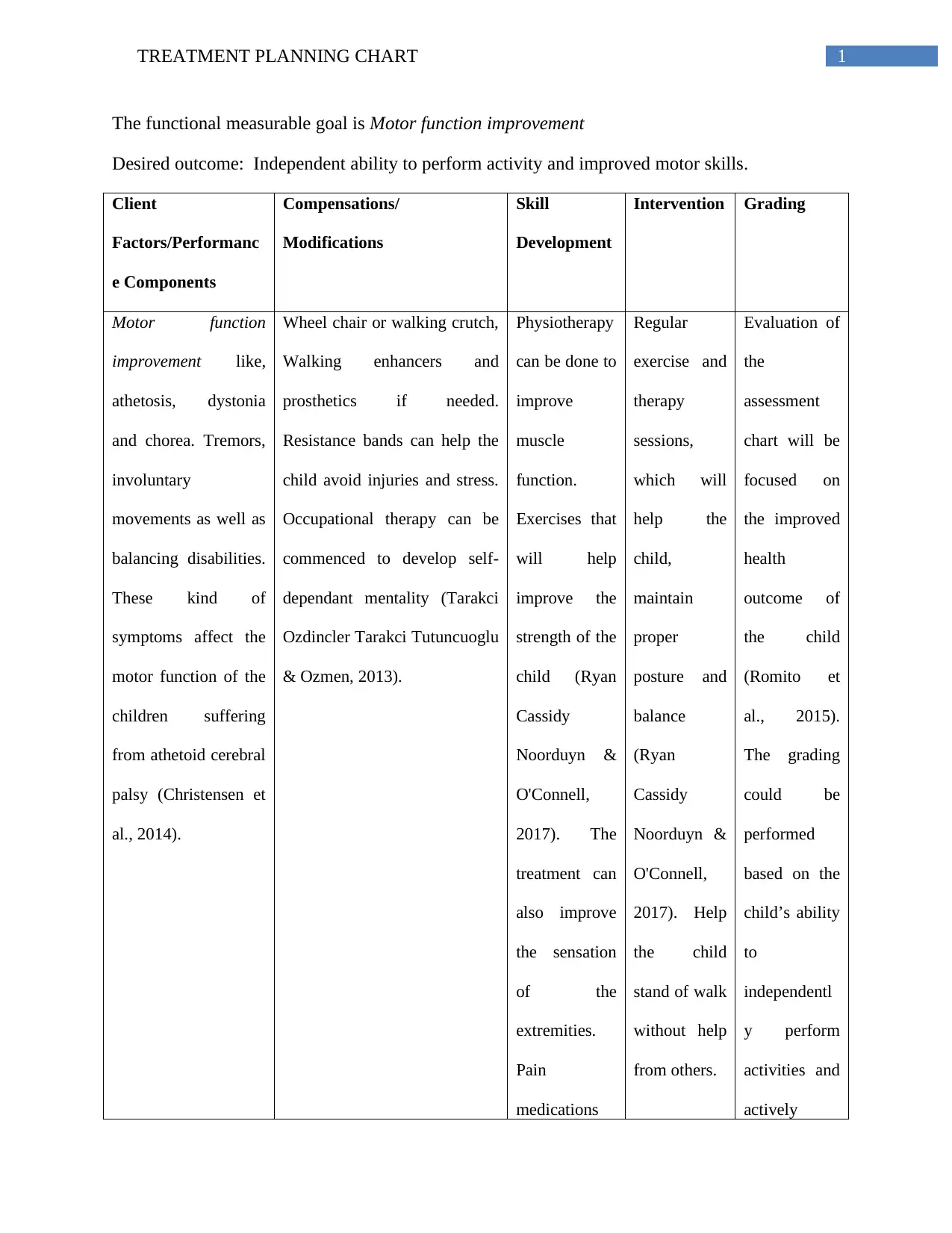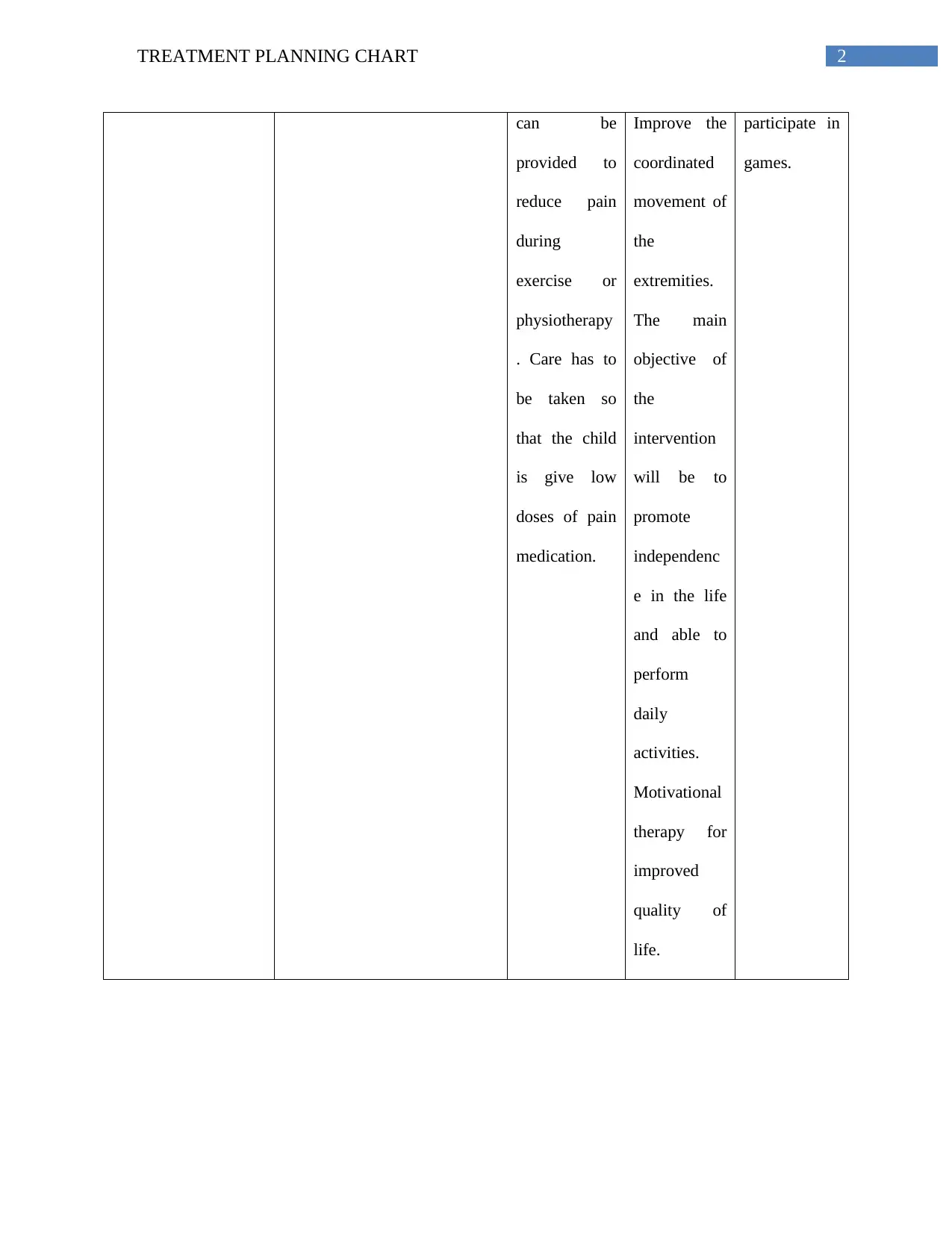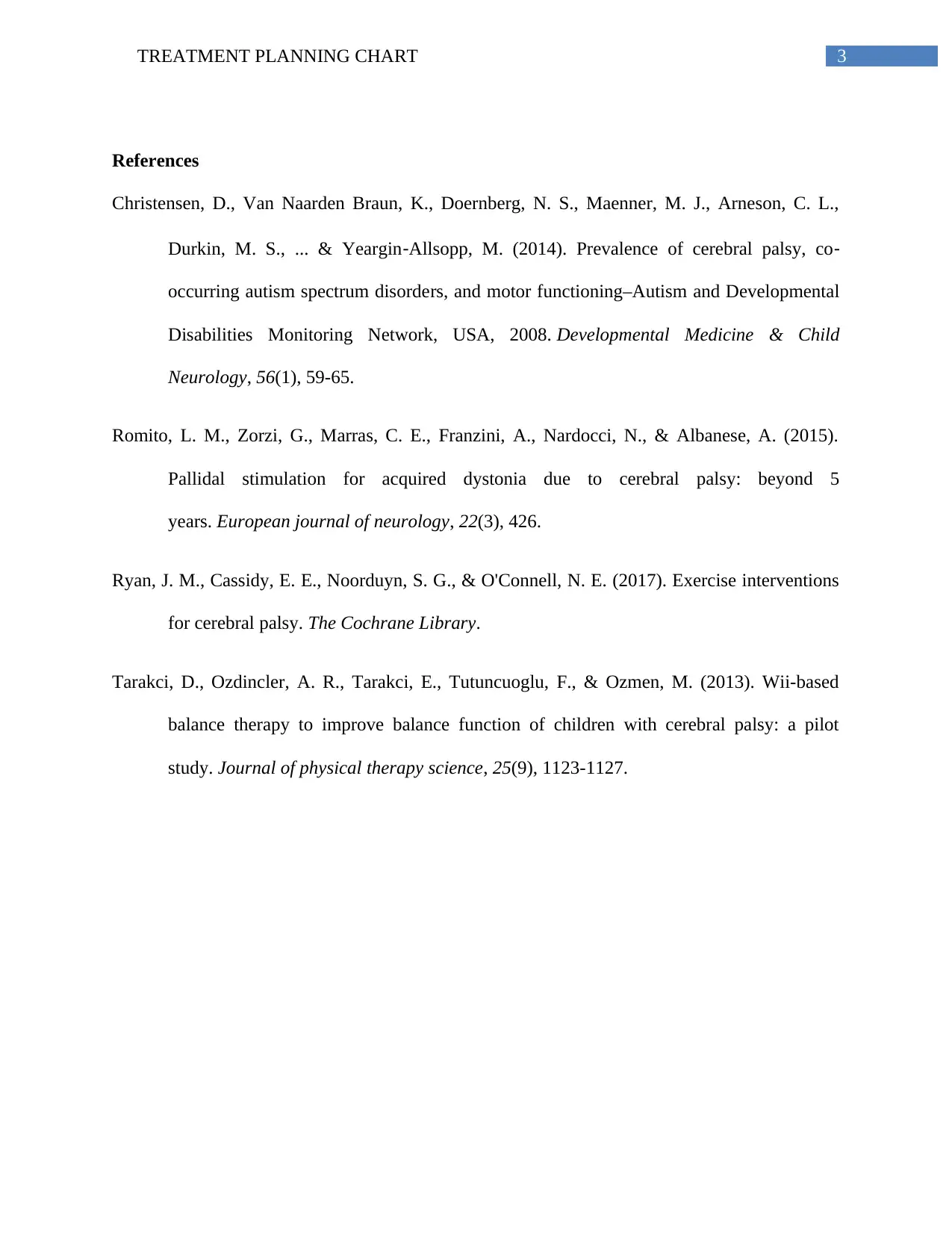Treatment Planning Chart: Motor Function Improvement in Cerebral Palsy
VerifiedAdded on 2021/05/31
|4
|553
|163
Report
AI Summary
This report presents a treatment planning chart designed to address motor function impairments in individuals with cerebral palsy. The chart outlines a comprehensive approach, including considerations for athetoid cerebral palsy, tremors, and balance disabilities. It suggests interventions such as the use of wheelchairs, walking aids, and resistance bands, alongside occupational and physiotherapy. The report emphasizes the importance of exercise, pain management, and regular therapy sessions to enhance posture, balance, and the ability to perform daily activities. The primary goal of the intervention is to promote independence and improve the quality of life for individuals with cerebral palsy. The evaluation of the treatment plan will be based on the patient's ability to perform activities independently and actively participate in games. The report also includes references to support the strategies and interventions discussed.
1 out of 4





![[object Object]](/_next/static/media/star-bottom.7253800d.svg)